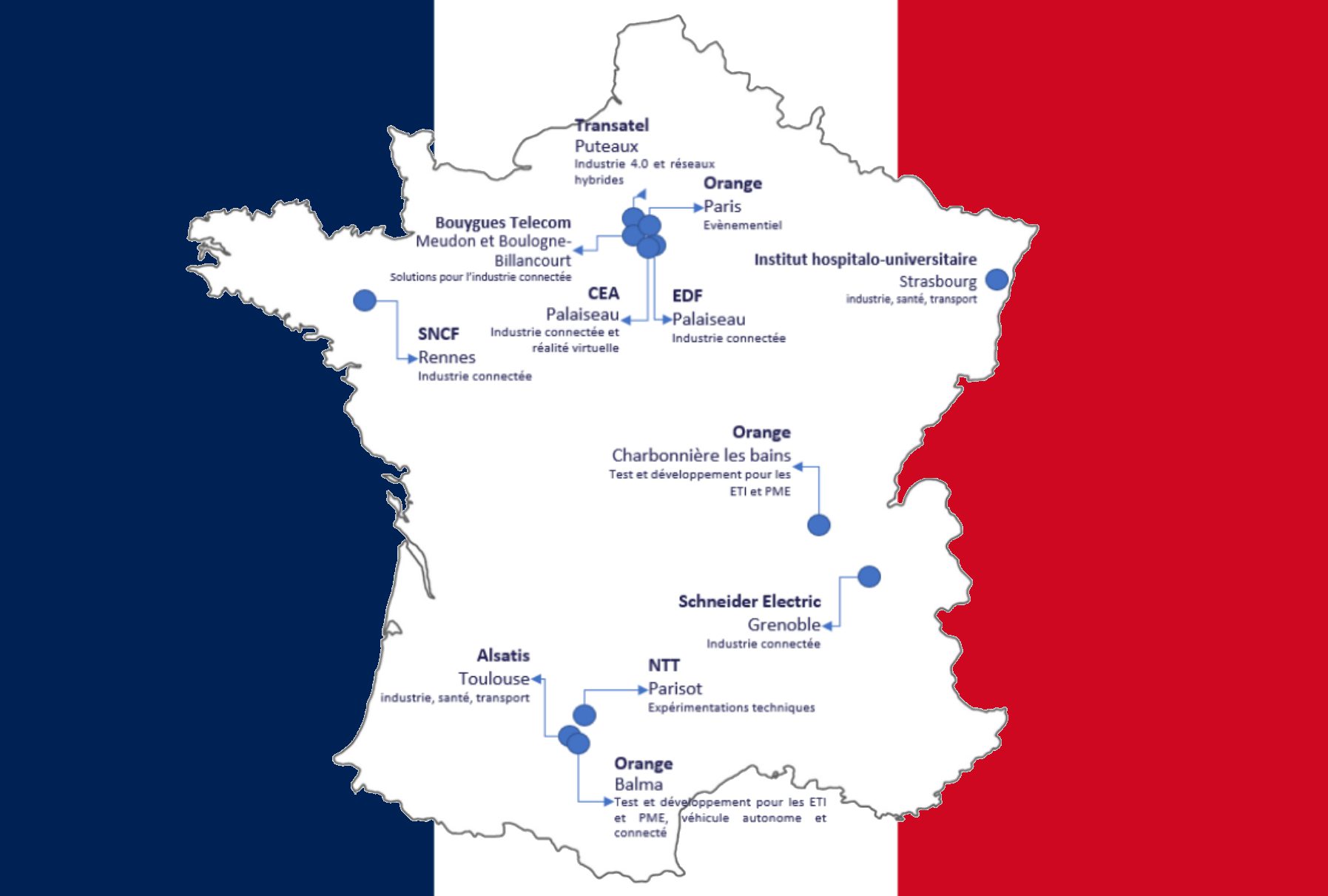French regulator Arcep has awarded three new trial spectrum licences for enterprises to deploy private 5G networks in the 3.8-4.0 GHz band, taking its total roster of enterprise trialists in France to 13. The band is being liberated for French enterprises, in line with the recommendation of the French’s government’s ‘industrial 5G task force’ on March 15 – and broadly in line with provisions made in the US at 3.55-3.7 GHz, Germany at 3.8 GHz, and the UK at 3.8-4.2 GHz.
As with Germany, notably, the French focus is on 5G for manufacturing; it also references usage for local authorities, universities, and research labs (etc). The three new licences have gone to University Hospital Institute of Strasbourg, SNCF Réseau, and Capgemini; an explanation of each is included below. Details of the other 10 trials, also in the energy and health sectors, are available (in French) on the regulator’s 5G trial platform dashboard.
A map showing the holders and venues for all 13 licences is below. Mobile operator Orange has three in total, in Charbonnières-les-Bains, Balma, and Paris for testing standalone 5G (SA) edge and slicing mechanisms with developers for, respectively, enterprise use cases, connected and autonomous vehicles, and video capture for “major events”. Rival Bouygues Telecom has one licence, in Meudon et Boulogne-Billancourt, with no experiments listed against it.

Meanwhile, NTT is testing its private 5G solution for enterprises in Parisot, in southern France, while its French-based stablemate Transatel has a licence to test private/public 5G roaming in the north, in Puteaux. As well, Schneider Electric has a licence in Grenoble for factory operations, Alsatis has one in Toulouse for the European transport sector, French research organisation CEA has one in Palaiseau for to develop AR/VR for Industry 4.0, and EDF has one in Palaiseau for testing AR in the energy sector.
The three new trials are as follow:
University Hospital Institute of Strasbourg
Part of the Franco-German “5G-OR” project, the trial seeks to be a demonstrator for a new generation of smart operating room, using private 5G for personalised and secure minimally-invasive operations. The French team includes two institutes created by the Investing in the Future Programme: the University Hospital Institute of Strasbourg and b-com Institute of Research and Technology, plus startup RDS Diagnostics.
SNCF Réseau
The ‘5G Living Labs’ project is made up of three spaces for developing sovereign and trusted digital environments, for industry and for travellers. They are located in the city of Rennes, in the train station, in the adjacent maintenance “Technicentre” in the city centre, and in the industrial Technicentre at the airport. By connecting these spaces, the platform creates the ability to test use cases relating to SNCF’s expertise in the station and industrial settings.
Capgemini
Capgemini is enhancing its 5G Lab in Issy-les-Moulineaux with new trial capabilities for future manufacturing use cases, supplementing its 5G private network with new spectrum in the 3.8-4.0 GHz band.
The new band’s proximity to the core 5G band (3.4-3.8 GHz) gives industry stakeholders “immediate access to a mature and diverse ecosystem of devices and equipment, as well as a large quantity of spectrum,” said Arcep. Further private 5G licences and trials will be added in the 3.8-4.0 GHz band; Arcep said it was open to requests (link), until December 31. Trials can last up to three years, using 100 MHz of spectrum in the frequency range. Practical rules for accessing these frequencies are available here.
The new spectrum release for private 5G “complete(s) the frequency ranges already available” to enterprises, in the 2.6 GHz TDD and 26 GHz bands, earmarked for enterprises, neutral hosts, and spectrum sharing in 2020 as part of the government’s drive on ‘telecoms network sovereignty’ with its “France Relance” national recovery plan. In March, Arcep created a portal to simplify access to the 2.6 GHz TDD band. National mobile operators can also request long-term access to 2.6 GHz frequencies via a web portal that streamlines the process for accessing those resources, it noted.

